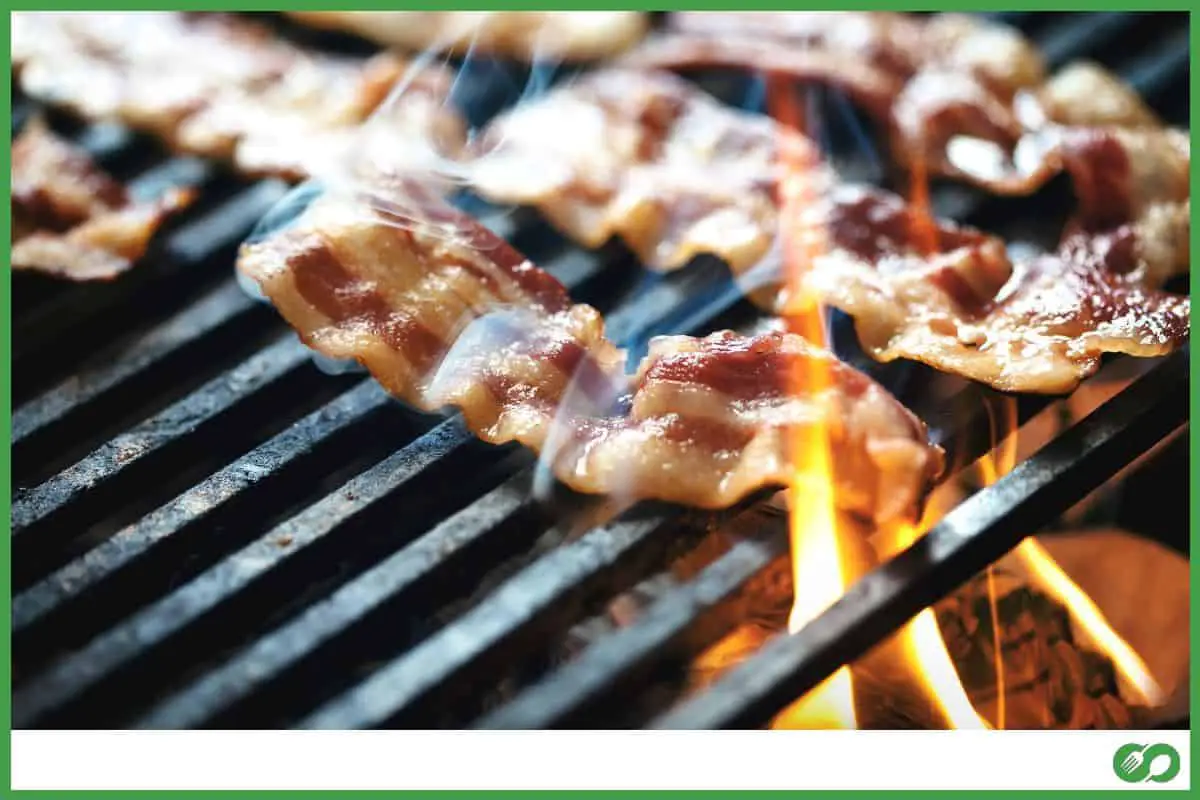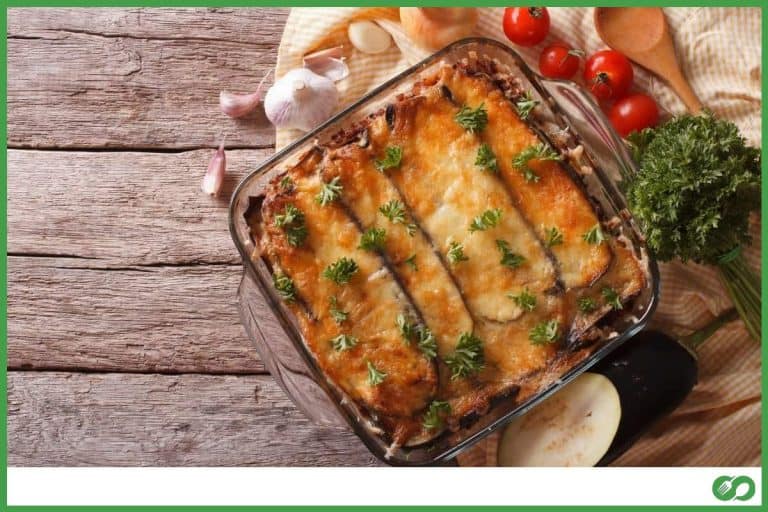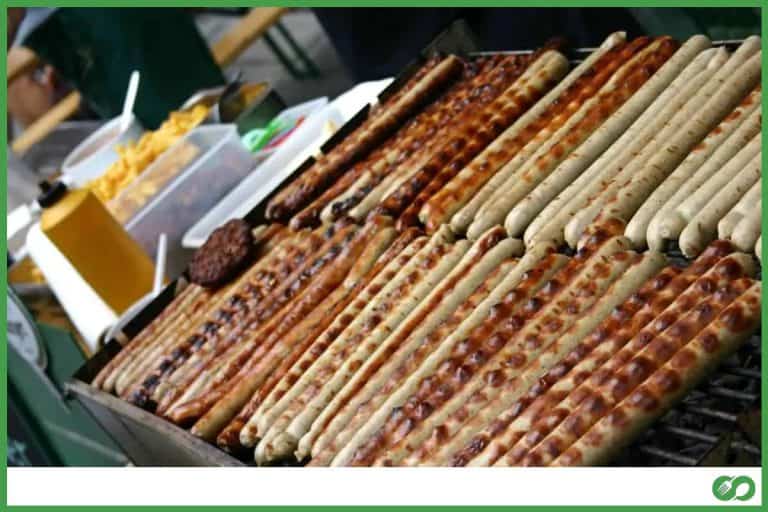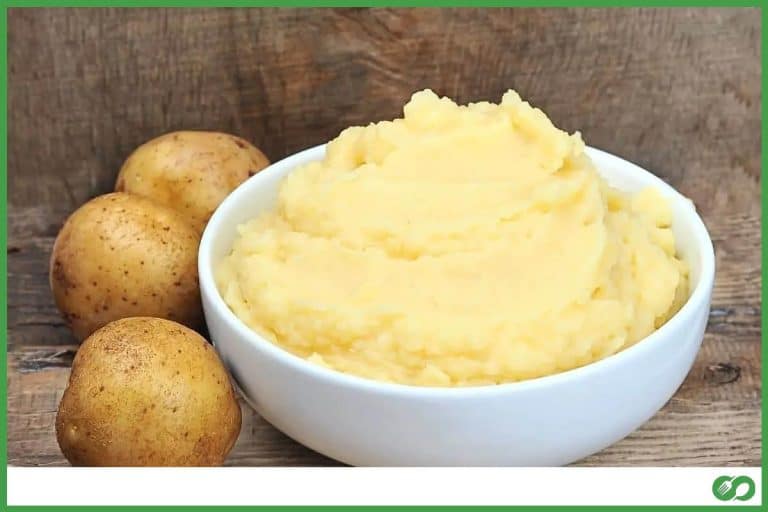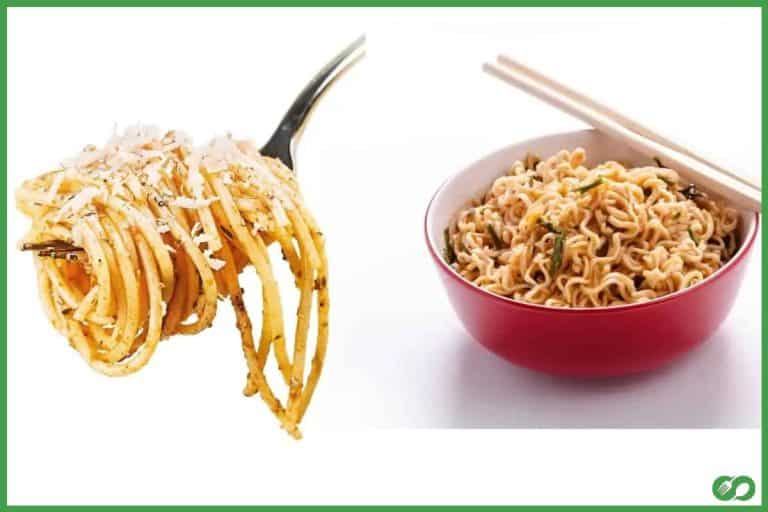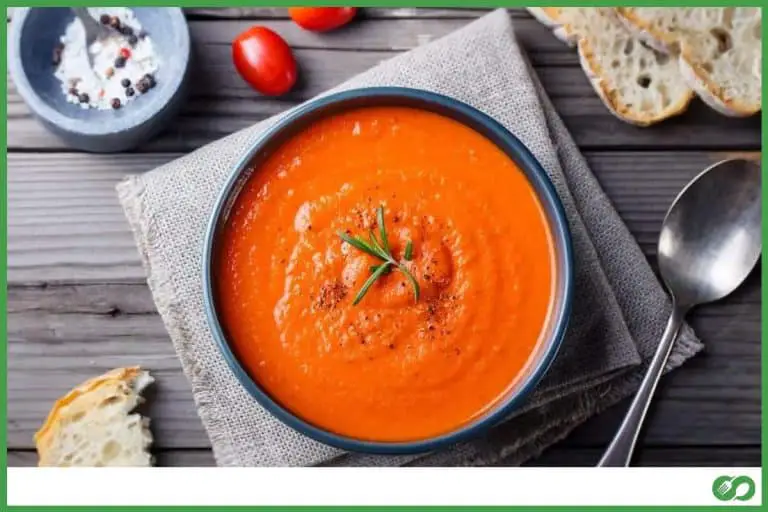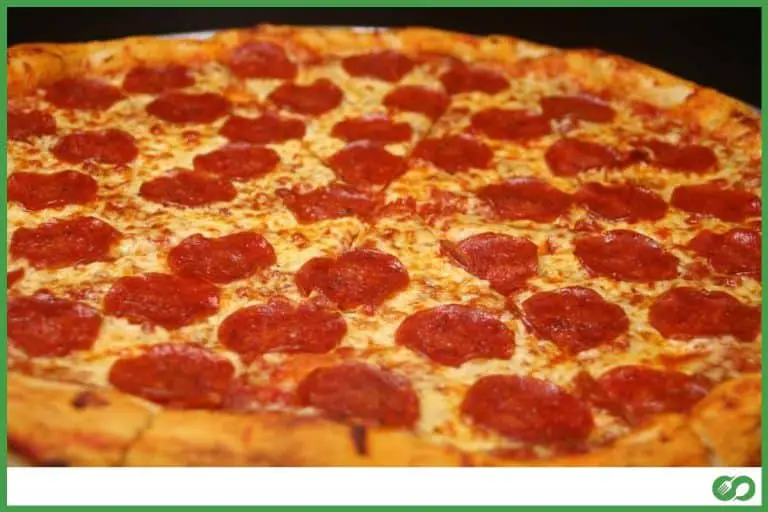How to Cook Bacon (Ultimate Guide)
This post may contain affiliate links which means that, if you choose to make a purchase, I may earn a small commission at no extra cost to you.
Cooking bacon is one of the few kitchen basics I had to get familiar with during my broke college days. Strips of bacon can be highly versatile since it allows me to make the simplest breakfast and more complex dishes in the oven. However, it can be intimidating since there’s always the risk of soggy strips.
There are numerous ways of cooking bacon. You can fry it in a pan on the stovetop, bake it in the oven, grill it, or even put it in the microwave. The key is to control the heat and grease so that you can enjoy crispy bacon strips instead of a soggy mess. Use paper towels to soak up excess grease.
Each method has its own nuances and there are several ways of incorporating bacon into all kinds of dishes. I’ve consolidated all that information through a lot of research, help from friends, and my own experience and created an ultimate guide for cooking bacon.
Before you go into the cooking methods, check out this helpful chart.
| Method | Stovetop | Oven | Microwave | Air Fryer | Grill |
| Cooking Time | 8-12 minutes | 18-20 minutes | 5-6 minutes | 8-9 minutes | 5-6 minutes |
| Tools | Frying pan, Tongs, Bulb baster, Splatter screen | Baking Tray | Microwave-safe dish | No extra tools | Tongs, Foil, Drip Pan |
| Suitable bacon for the method | Leaner and thin strips | All types of bacon | All types of bacon | All kinds of bacon | Thick cut bacon |
| Cleanup | Messy and time-consuming | Quick and easy | Quickest and easiest | Mess free, can be entirely done by the dishwasher | Very long and difficult process |
Cooking bacon on the stovetop
While growing up cooking bacon on the stovetop was the norm in my home. My mom had a trusty cast iron griddle that still serves her to this day and she could cook an entire pound of bacon on that. Sometimes, the bacon frying was delegated to me as my mom took care of my siblings. That’s when I discovered it isn’t as simple as it seems.
Tools for cooking bacon on the stovetop
While a stainless steel pan or a nonstick pan can be used for cooking bacon on the stovetop, I have a personal bias towards cast iron skillets. While cast iron is more difficult to clean up compared to stainless steel, it holds heat quite well and imparts an amazing flavor to your dishes, and doesn’t emit toxic chemical fumes.
Apart from a pan, you’ll also need a decent pair of tongs to turn the bacon frequently. A spatula simply wouldn’t cut it since you’ll fold the bacon or splash a bit of hot grease out of the pan til the bacon is soft. The tongs serve their purpose well. You’ll also need a bulb baster to suck out the fat drippings.
You may also need to protect yourself against bacon splatter if you’re cooking especially fatty strips. You can use a splatter screen to protect yourself from that. However, that would make cooking a bit more bothersome since you’ll need to lift up the screen every time you turn the bacon. Moreover, you’ll have one more thing to clean at the end. That’s why I choose my bacon carefully.
Tools:
- Cast Iron Skillet or Stainless Steel pan.
- A pair of Tongs.
- Bulb baster.
- Splatter Screen(Optional).
Best bacon for stovetop cooking
As mentioned above, especially fatty strips of bacon aren’t ideal for cooking on the pan since they cause a lot of splattering. I’ve dealt with numerous painful blisters to know that. That’s why it’s important to choose the right type of bacon.
You’ll find fattier, thicker, or smoked bacon strips at the supermarket. Thicker cuts would lead to chewy strips while thinner cuts would become more crispy. I usually look for strips with a bit more meat than fat and pick up nitrate-free options. Nitrates in high doses can do a lot of harm to your body, especially during pregnancy.
With that out of the way, let’s check out the best way of cooking bacon on a stovetop:
- Bacon needs to start on a cold pan. So set your pan on the stovetop and lay down the strips even before turning on the heat. Don’t be afraid of crowding the pan since the bacon strips would shrink significantly after the fat gets rendered out.
- Turn on the burner low and cook your bacon slowly over low heat. When the bacon releases some of its fat, it would curl up and that’s when you need to turn it with the tongs. Keep flipping and turning to get an even browning.
- If the bacon is too fatty, your pan will get full of fat drippings that need to be sucked out with a bulb baster and transferred to a ceramic or glass jar. I avoid pouring the drippings directly from the pan to eliminate the risks of a grease fire.
- Next, cook the bacon till it’s crispy. You can take it out a bit earlier if you like to chew on flappy bacon. It’s safe to take out the bacon when the meat loses its deep raw red color. It’s also important to know that the bacon will stiffen up when it comes out of the pan and cools down.
- Put the cooked bacon on a plate with paper towels to soak up the excess grease.
- If you have more bacon to cook, drain out the pan grease, scrape off the burnt bits and continue with the next batch. If the pan has developed a stubborn crown crust, you need to wait for the pan to cool down and clean it before you cook the next batch.
You may want to open a few windows while cooking bacon on the stovetop. Bacon has a very overpowering smell and frying it can make your kitchen and your whole house smell like bacon for hours.
Save the bacon drippings
Even after you’ve collected bacon drippings with a bulb baster, you’ll have more left on the pan. Turn off the burner and drain out the excess drippings into the same glass or metal jar and save it. Don’t use plastic since it may melt the container.
Even glass is at risk of shattering if the bacon fat is too hot. However, I haven’t experienced that yet. Bacon grease has a ton of flavor and it can be used for sauteing veggies, chicken, fries, and more. Bacon fat also has a high smoke point of around 325 degrees Fahrenheit and that leads to more stable cooking.
Cleaning up the pan
While I love crispy bacon from my cast iron skillet, I hate the cleanup that follows. If I’m making multiple batches of bacon or cooking thick cuts on the stovetop, the pan tends to develop a brown crust that’s hard to get rid of.
Here’s how you can clean up the pan after cooking bacon:
- Fill up the pan halfway and turn the burner to high heat.
- As the water comes to a boil, use a spatula to gently scrape off the bottom of the pan.
- Dislodge the brown crust stuck to the pan with the spatula. If it seems too stubborn, bring down the heat, add baking soda in moderation and turn the heat back up.
- Wait for a few seconds and use the spatula to scrape off the softened crust
.
- When all the stuck bits are dislodged carefully transfer the boiling water along with the dislodged crust to the sink.
- Next, use dish soap to clean your pan.
Cooking bacon in the oven
When I’m cooking for just me and my family, I prefer the stovetop method. It’s easy and quick compared to other methods. However, when it’s the holiday season or I have a lot of guests at home, I prefer to cook bacon in the oven. It’s cleaner and allows me to prepare other dishes at the same time. Bacon baked in the oven also turns out crispier.
If you’ve used a splatter screen, you’ll need to clean that up as well. Use a soft sponge with dish soap to scrub the splattering screen gently on both sides and rinse it thoroughly under the tap. You may repeat this process if the screen isn’t completely grease-free the first time.
Advantages of baking bacon in the oven
- Baking bacon in the oven allows you to cook multiple batches at the same time and take care of a big crowd.
- It doesn’t require extra tools like tongs, a bulb baster, or a splatter screen.
- Baking bacon is a mess-free process since there are no splatters that could fly your way or grease up the stove and countertop. In the oven, the bacon simply sizzles till it shrinks and crisps up.
- You also get to multitask while using the oven method. You can do whatever you need during that 20-minute baking window. Once the bacon is cooked, you can set up a new batch and get back to other tasks.
- There’s no need to worry about thicker and fattier cuts since all of them cook well and turn crisp at 400 degrees in the oven.
Here’s how you can bake bacon in the oven:
- Preheat the oven to 400 degrees Fahrenheit. After that, get a baking tray lined with parchment paper and place the bacon strips on it. Try to avoid crowding and make sure a strip isn’t laid over another.
- Cook the bacon for around 20 minutes or till it gets crispy. You may bake it for a shorter duration if you don’t like your bacon crispy. Rotate the pan halfway through to ensure even cooking.
- Get a paper towel-lined plate and transfer the baked bacon to it to soak up excess grease.
- Next, line a fine mesh sieve with a paper towel and drain out the bacon drippings from the tray into a glass or metal jar.
- You can cook multiple batches of bacon in the oven. To cook more batches, you just need to drain the bacon drippings and line the tray with a new parchment sheet.
Cleanup
After you’re done baking your final batch, remove the baking tray from the oven and get rid of any bacon pits. Wipe residual grease with a paper towel and place it in the dishwasher’s bottom rack. Use a quality detergent to ensure thorough cleaning. Allow the tray to dry out before storing it away.
Do you flip the bacon strips while they cook in the oven?
To ensure even cooking, you may rotate the baking tray halfway through. That way, the bacon strips are evenly browned and crisped. However, you do not need to flip the strips.
Cooking bacon in the microwave
Microwaving bacon isn’t my favorite method of cooking it. That’s because I don’t get any bacon drippings at the end. I’m addicted to saving bacon drippings since it adds so much flavor to other dishes. Moreover, microwaving bacon gets it too crispy since the fat is constantly being soaked up by multiple layers of paper towels. However, microwaving bacon certainly saves time and has a few other advantages.
Advantages of microwaving bacon
- Similar to the oven-baked method, microwaving bacon is mess-free and you don’t need to worry about oil splatter. In some aspects, it can be even cleaner than the oven method.
- It’s arguably healthier since the bacon won’t sit there sizzling and soaking up its own fat.
- Microwaving bacon is also quicker. You can cook bacon in the oven within just 5 minutes.
- Cleanup is also easy. You just need to throw out the paper towels and clean the dish.
- Your home doesn’t end up smelling like bacon. Allowing the bacon to cool down in the oven contains all the bacon smell.
- You don’t need fancy tools. Just a microwave-safe dish and lots of paper towels.
Here’s how you can cook bacon in the microwave:
- Get a microwave-safe dish and line it generously with three or four layers of paper towel.
- Lay down the bacon side by side without overlapping them. If you have a small microwave or a small dish, you may need to cut the bacon strips in half so that they aren’t hanging out of the plate. Otherwise, it will leave a mess in your microwave.
- After laying the bacon, cover them up with two more layers of paper towel and put the dish inside the microwave.
- Cook the bacon for around 5 minutes on high to get it crispy. Pause it halfway through to check the condition of the strips. If you have a more powerful microwave or thinner strips, the bacon may cook faster.
Cleanup
If you thought cleanup was easy for the oven-baked method, you’re in for a treat. With the microwave method, you use a lot of paper towels. That means you lose all the bacon fat. However, since most of the fat is absorbed by paper towels, cleanup is very easy. All you need to do is throw out the towels and wash the dish with soap.
How long does it take to microwave bacon?
While the standard time for cooking bacon in the microwave is around 5 minutes, it may vary depending on the type of microwave you have and the type of bacon you’re cooking. With a very powerful 1200-watt microwave and thin strips of bacon, you may be able to cook it within less than 3 minutes.
Do I need to use a microwave tray for cooking bacon in the microwave?
There’s no need for a microwave tray to cook bacon. All you need is a flat microwave-safe dish that fits inside your microwave and line it up with numerous layers of paper towels. Use a thick oven glove to take out the dish since it would be very hot.
Can I cook a big batch of bacon in the microwave?
Cooking large batches of bacon in the microwave is very easy. You need to separate multiple layers of bacon with several layers of paper towels in between. However, it’s best to not cook over three layers of bacon at a time to keep the cooking time low.
Cooking bacon in the air fryer
I love my air fryer since it allows me to cook so many amazing dishes without using oil and crispy dishes turn out crispier. Moreover, cooking bacon in the air fryer takes as long as it takes on the stovetop. It’s all about choosing the right air fryer. The best thing about this recipe is that it’s probably the healthiest of them all and you don’t need to sacrifice bacon drippings.
The best type of bacon for the air fryer
Unlike the stovetop method, there’s no best type of bacon here. You can cook all kinds of bacon and adjust the settings accordingly. For instance, if you have regular-cut bacon, cook it at around 330 degrees Fahrenheit for 8 to 9 minutes to get them crispy. Shave off a few minutes if you like soft and floppy bacon. For thick-cut bacon, you need to add a few minutes to the cooking time.
The best air fryer for cooking bacon
There are primarily two types of air fryers in the market and both of them serve different needs. Basket-style air fryers consume less space on the counter and are great for small families. Moreover, these air fryers usually have dishwasher-safe baskets and liners. Hence cleanup is easy.
On the other hand, toaster oven-style air fryers have a larger footprint and are excellent for cooking a large batch of bacon for a big family. While I don’t have a big family, I have plenty of counter space to fit my toaster oven-style air fryer. It also cooks the bacon a bit faster than basket-style air fryers.
Advantages of air frying bacon
- Cooking bacon in the air fryer is quicker than the oven-baked method and the bacon tastes as good.
- Cleanup is also easy since most air fryer parts are dishwasher-safe. Get rid of the grease, chuck it in the bottom rack and forget about it.
- No need to worry about grease splatters either.
- You don’t need to monitor or interfere during the cooking process at any time. There’s no need to turn or flip the bacon since hot air is evenly circulated throughout the air fryer chamber and your bacon gets even browning.
- The bacon can be cooked as crispy as in the microwave without sacrificing any of the bacon drippings. The bacon drippings are collected at the bottom and the bacon doesn’t sizzle in its own fat.
- There’s no need for extra cooking tools.
With that out of the way, let’s check out how you can cook bacon in the air fryer:
- Get the air fryer basket and line up the bacon strips in it. You can crowd the bacon strips as long as no pieces are overlapped. They are going to shrink up quite a lot. So, it doesn’t matter even if they are placed very close to each other.
- Slide the tray or basket into the air fryer and set the temperature to around 330 degrees Fahrenheit and timer to around 8 minutes for regular cut bacon. For thicker cuts, increase the timer to around 10 minutes. This may vary depending on your air fryer model.
- When you’re using this method for the first time, check on the bacon strips halfway through and take them out if they are brown and crispy. Otherwise, allow them to cook some more. You may need to experiment with the timer the first few times to get it just right.
- After the bacon is cooked, take them out on a plate lined with paper towels and transfer the bacon drippings from the basket to a glass or metal jar.
Cleanup
Cooking bacon in the air fryer is completely mess-free. There are no extra trays, dishes, or messy pans with brown crusts. After you’re done cooking the bacon and collecting the bacon fat, you can simply put the air fryer basket and liner in the dishwasher and let the machine work for you.
Will bacon get smoky in the air fryer?
Bacon fat’s smoking point is 350 degrees Fahrenheit. If you can keep the temperature below that level, you don’t need to worry about bacon smoke. That’s why most air fryer bacon recipes recommend you keep the temperature at around 330 degrees Fahrenheit.
Do I need to add oil to the bacon?
Whether you’re cooking bacon in the microwave, oven, stovetop, or in an air fryer, you never need to add any oil to it. Even the leanest cuts of bacon would release enough grease to cook and crisp up the bacon.
Should I preheat the air fryer before cooking bacon?
Unlike the oven, air fryers have smaller chambers and that’s why they can easily heat up and circulate the air very quickly. That’s why there’s no need to preheat the air fryer before cooking bacon.
Cooking bacon on the grill
Cooking bacon on the grill is my least favorite method. Grills are messy and I’ve spent more time cleaning my grill than cooking on it. However, when it’s summer and I’m spending most of my time near the grill during those summer barbecues, I use this method.
The best type of bacon for the grill
With the grill, I only use thick-cut bacon. Controlling the temperature on a grill is a bit tricky. I’ve been unable to finely control the temperature of the grill and ended up with burnt bacon too many times. That’s why I only stick to thick-cut bacon. There’s more room for error.
Tools for grilling bacon
When you’re cooking bacon on the grill, you need a few tools. If it’s a regular gas grill, you need a few sheets of aluminum foil to collect the bacon grease while it’s cooking. While using a charcoal grill, you need to fill up a drip pan with water and set it under the grates or rack to collect the bacon drip. It’s very important to keep bacon drips away from exposed hot elements like charcoal, heating element, or gas flame. Otherwise, there’s a risk of fire.
Tools:
- Food-safe aluminum foil.
- Tongs.
- Drip pan with water.
Here’s how you can cook bacon on a grill:
- Use a few sheets of aluminum foil to create a base that fits your grill and set the bacon on it side by side. If you want to place the bacon directly on the grates, make sure to fill up a drip pan with water and place it under the grates. The drip pan should occupy more area than the bacon and should be able to collect all the grease.
- Now raise the grill’s temperature high and cook the bacon for around 2 to 3 minutes.
- Next, bring down the heat to flip the bacon strips and turn the heat up again.
- Cook for 2 or 3 minutes or till the bacon gets brown and crispy and transfer it to a plate lined with paper towels.
Cleanup
Cleaning your grill is a pain every time I use it. I use a charcoal grill and love the smoky flavor it adds to the bacon and other types of meat, I hate the cleaning session that follows. You’ll need some dish soap, a stiff nylon brush, a stainless steel grill brush with a scraper, and numerous rags.
Here’s how you need to clean the grill after cooking bacon:
- Allow the grill to cool down a bit and brush off the grates and racks while it’s still a bit warm and clean off the food particles.
- Proceed with the built-in scraper of the brush to scrape off burnt food.
- Now wipe the grates and racks with a damp rag to loosen stubborn stuck bits.
- Next, take out the racks and grates and soak them in a bucket with warm water. Add dish soap and mix it in and let the grates and racks soak for around an hour.
- After the grates and racks are soaked, take them out and clean off the loosened grease and food.
Apart from cleaning the grill after each use, you also need to deep clean the entire grill at least once a year.
Conclusion
To me, bacon is nothing short of bliss. It’s one of the few reasons that keep me from going vegan. There are various methods to cook it, from frying in a pan to baking in the oven. You just need to make sure to choose the right cut of bacon and cook it to the preferred doneness. I like my bacon crispy, while my partner likes them to be a bit softer and chewy.
Either way, you can’t go wrong with bacon. You can have it with a few poached eggs, put it in a sandwich, wrap some sausages with it and do a lot more. I hope you find this article useful and use the above-mentioned methods to cook the perfect bacon with whatever tools you have.

